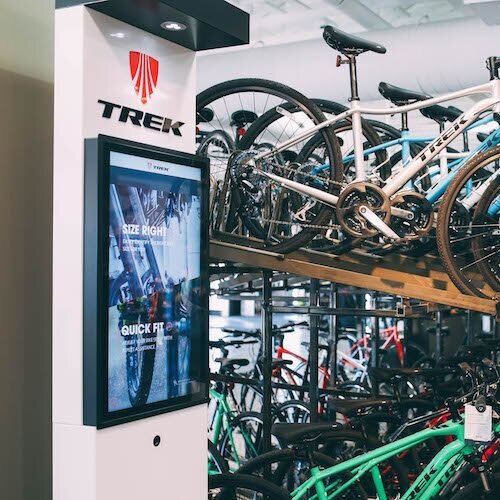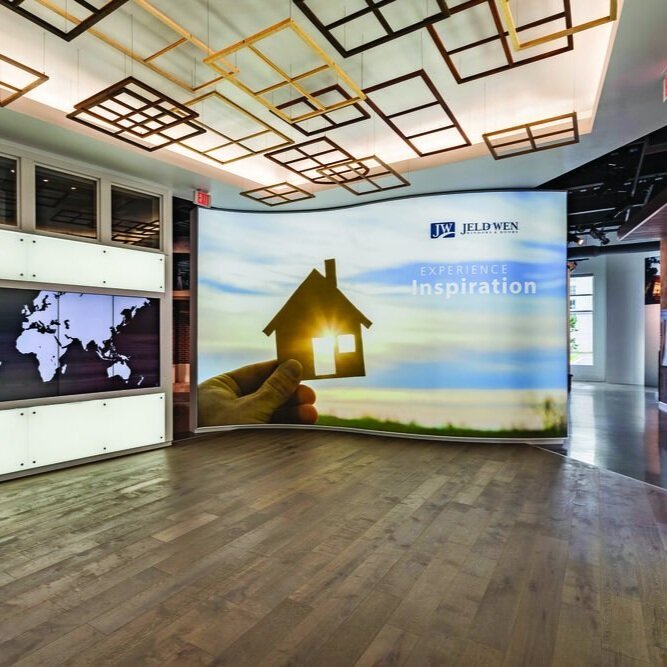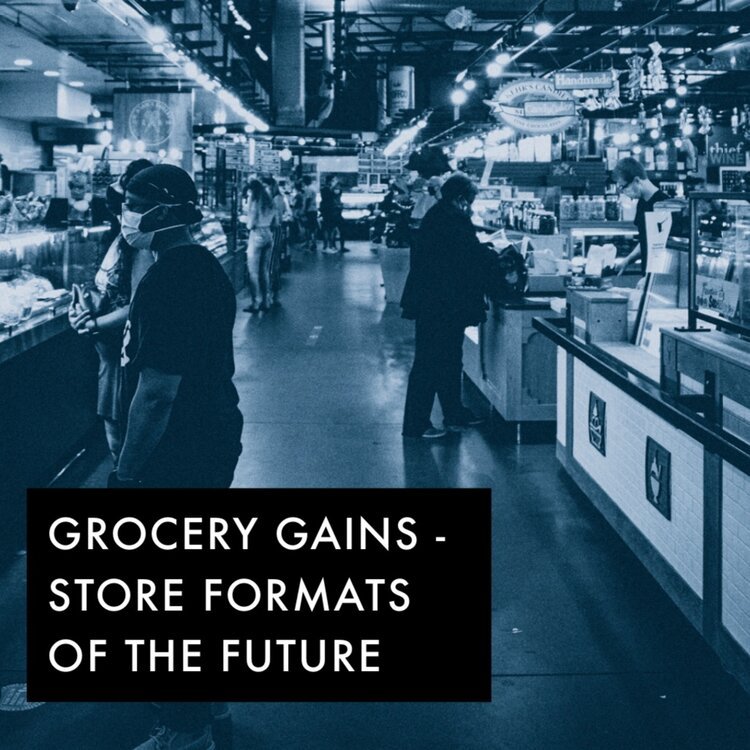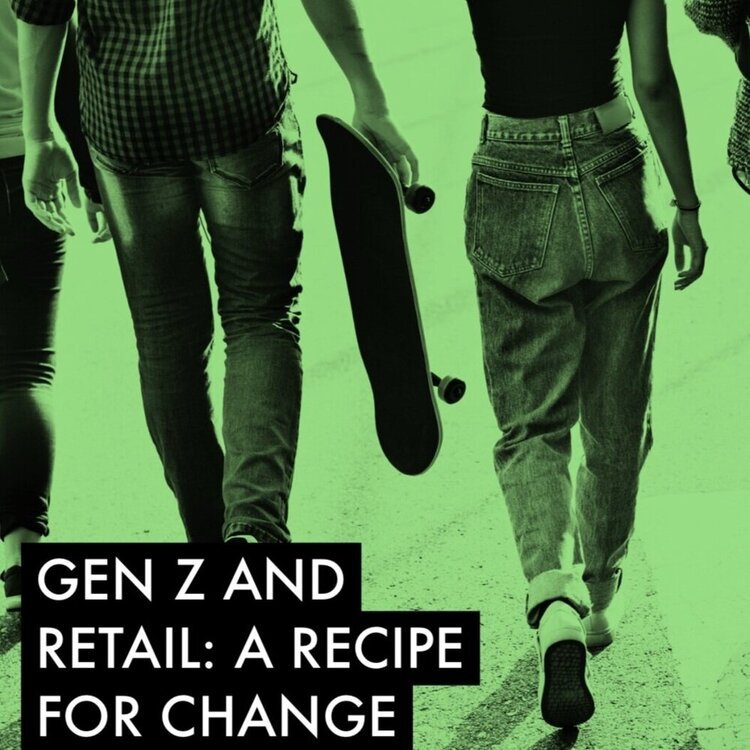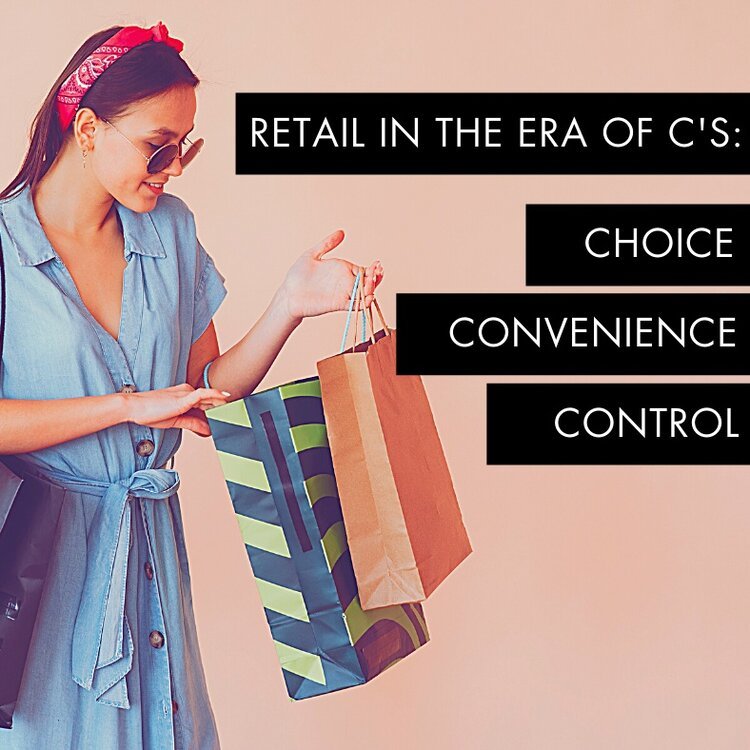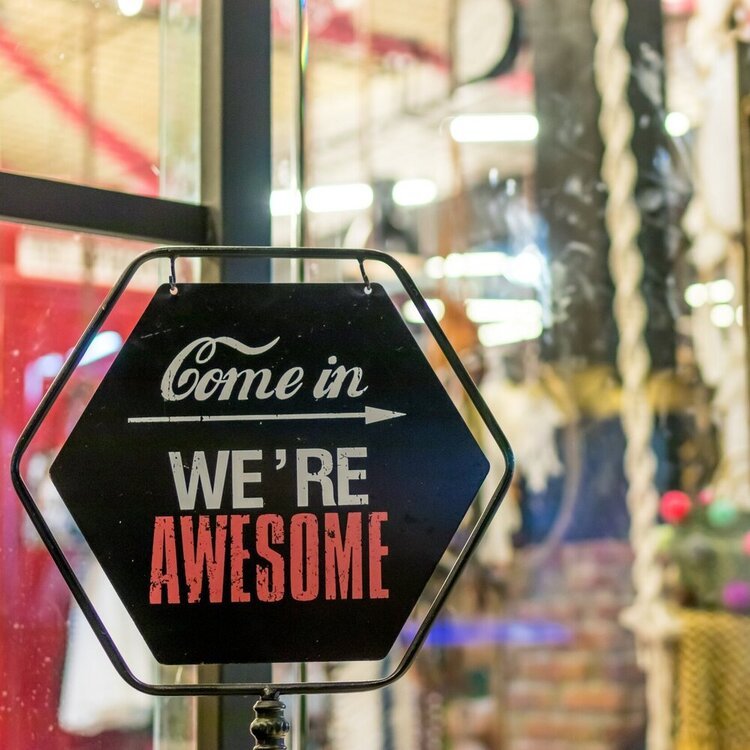Displagency: A New Approach to In-Store Retail Marketing
You may have heard we call ourselves a Displagency™, and you may be wondering what that is and why you should care. We’re here to clear that up.
When Axis Display Group was founded in 2010, our primary focus was to turn good retail into great by dialing in on common disconnects between retail display design and retail manufacturing plausibilities.
We set out on a mission to ensure display companies over-promising and under-delivering became a thing of the past, and that brands, retailers, and their channels were empowered with all the information necessary to develop long-lasting retail programs that truly resonated with modern day shoppers.
Many other display companies aspire toward a similar vision. But in practice, transforming good retail into great retail requires the type of balanced approach only the most agile, diverse, and multi-faceted teams can execute.
You need doers and thinkers, abstract creators and practical processors, relational strategists and cattle-driving git-it-doners who willingly choose to work on the same team because they understand and value interdependent thinking and know it is what makes magic happen on-time, on budget, and above expectation.
Our founders knew this - embraced it. They used it to take stock of what really goes into planning modern-day retail programs and formed an eclectic team of highly-skilled specialists who together began to call themselves a “Displagency™”
The Premise of a Displagency"™
By principle, we did not want to start a business producing retail displays and fixtures if they weren’t going to offer the industry something markedly different than what already existed. We refused to add noise to an already noisy industry.
We knew that if we wanted to deliver on our goal of elevating retail programs from good to great, we had to find a new angle to serve. That angle ended up being people.
people
Yes, everyone talks about “people” - about humanizing the industry, making genuine connections, and other feel-good marketing speak, but the people we’re talking about are not just the end-users; they are the individuals in charge of thinking up, building, delivering, managing, using, and ultimately presenting the retail program to shoppers once it makes it to the field.
Retail Programs are only as good as the people who run them - both in the course of their development, and in the lives they live in the field.
In the course of a retail program’s development there will be many cooks in the kitchen. Stakeholders from marketing, advertising, accounting, product, store operations, sales, logistics, sustainability, DEI, social impact, and more will have vested interest in seeing the project succeed - even if they are not part of the retail planning and development team. For this reason, they will bring their opinions and suggestions, desires and demands, hangups and celebrations to attention in many subtle and not-so-subtle ways.
Rather than ignoring this truth, a Displagency model makes room for it - it invites the insights from the interdependent team to the table early on because it knows the retail industry frequently experiences major losses in in-store marketing investments due to a lack of connected, strategic communication between brands, retailers, suppliers, and their teams.
How many of these common retail planning hiccups have you experienced?
The right decision-makers aren’t engaged at the right time
Cross-functional, interdepartmental collaboration is treated like a chore rather than an opportunity
Department goals carry more weight than company-wide goals
Manufactures tend to prioritize the part, not the program
Retail designers tend to prioritize the program, not the part
Communication between brands and their channel retailers is perfunctory and brief, at best
Retailers and business owners don’t know how to get the most out of branded merchandising displays
Program installation and implementation is vague; follow-up training is non-existent
Everyone is just a little more out of touch with customer needs than they think
And more!
How do we fix this?
Establish a new gold standard.
As a retail supplier, it’s our job to proactively create solutions to the above problems. We know retail isn’t the same as it was ten years ago, five years ago, one year ago…and as consumers adapt to a more “channel-less” retail environment, the blended insights and learnings from interdependent teams will become more crucial in getting retail programs done right the first time.
Therefore, as a Displagency™, we:
Position ourselves as a collaborative leader – a gatekeeper – who is able to extract, organize, create, and/or implement a cohesive retail marketing strategy that supports not only the product, store, and customers’ expectations, but also the simultaneously occurring interdepartmental concerns of brand and retail project development teams.
Communicate said strategy to all involved parties in a timely and systemic manner. Create and deploy trackable systems to support, understand, and analyze individual and group goals transparently. Proactively adapt as needed.
Do this while concurrently knocking design work out of the park, and manufacturing a final product that truly makes people stop, stare, and buy.
Perhaps to some this approach may come off as “doing too much,” or not “staying in our lane.”
Let us be clear: we know our strengths, and we outsource our weaknesses, but we’ve also found that adapting a holistic “Zoom In / Zoom Out” approach to retail development (1) calms the nerves of busy teams, (2) rallies departments together to celebrate the same mission, (3) soothes budget and time constraints, and (4) delivers a more well-rounded retail solution to the field.
Zoom in: be willing to get curious about all of the the nitty-gritty, granular data points, concerns, holdups, ideas, objections, etc. of all involved parties (e.g., Product/channel managers, Marcom, Design, Construction, UX/CX, Merchandising, Purchasing, Operations, Finance, Legal, Logistics, Customer Service, Vendors, Suppliers, etc.).
Zoom out: hold all of that information up to the big picture; remember why you’re doing what you’re doing; champion for what keeps everyone most aligned and moving at a steady momentum toward a common goal.
Our Displagency™ approach ensures we always have the right people - possessing the right hard and soft skills - necessary to get your job done greatly.
These are not just words we say; they are practices we live by.
We’ve refined out service offerings over the past decade to strike the perfect balance between doing and thinking - between functioning as a typical display company and producing results like a strategic marketing and advertising agency. Here’s a breakdown of how it all works together - who we are, what we do, what we produce.
*Not a comprehensive list
Remaining true to this approach has afforded us the ability to turn good retail into great for many satisfied clients over the years. It’s also given us a leg up in what we’re able to offer our clients in terms of:
in-depth industry, market, and consumer research
refreshing and nuanced approaches to shopper analytics and retail psychology
better, more mission-aligned and purpose-driven messaging
the uncovering and establishing of new pathways of communication between brands, retailers, vendors, and sales teams, brand reps, and store/dealer owners - paths that lead to better performance assessment; improved owner/dealer buy-in, participation, and feedback; more engaging experiences for shoppers; and increased ROI for all
SEE EXAMPLES OF OUR DISPLAGENCY™ IN ACTION
Case Studies:
Consumer + Market Insight Reports
Branding + Positioning
Strategic Planning + Operational Support:
FREQUENTLY ASKED QUESTIONS:
I hear you, but don’t all display companies do this? Don’t they all build Retail Programs rooted in research and with strategy, project management, and success planning in mind? How is this model actually different?
We don’t believe in reinventing the wheel; only perfecting it. Let us explain in three parts. First, it’s true, most display company website bio pages will say something to the effect of, “end-to-end solutions for every retail need” and then list services based on project development stages - Discovery, Design, Production, Implementation, and so on. We do that, too. However, when working with a Displagency™, work doesn’t stay compartmentalized. Great retail is the sum of its parts. We don’t just listen to the concerns of retail development teams and departments - we take action and use a well-defined, customizable approach to create organizational structure around those concerns.
Second, when we complete a project we are not done with a project. We believe a project cannot realize its maximum potential without addressing the needs of store owners, dealers, and their employees. When we assess programs in the field, we aren’t just looking at ROI; we’re looking at buy-in and adoption. We’re looking for ways to empower and train associates. We’re looking for insight to report back to our client so they can inform their brand reps or channel managers. We’re looking for system-wide improvements, not just project-specific return.
Third, we believe there is a huge disconnect between retail design and retail manufacturing. Often, designers - whether in-house or from a contracted design agency - lack the technical knowledge of what it takes to actually produce a retail program. Because of that, development time is lost in translating, adapting, and re-working design ideas into manufacturing practicalities. This is especially important now with rising production costs, material limitations, and supply chain issues. On the other hand, when display companies that deal primarily or exclusively with manufacturing are tasked with creating a solution based on a set of client-provided specifications, they often lack a bit of that innovative design “edge” and “big picture thinking” common with agencies, design houses, or internal creative teams. Operating as a displagency ensures both sides of this equation are balanced.
Where do you build this into your cost?
This is not a value-add so much as it is a business model. When AXIS was founded, it was created to operate with extraordinarily low overhead. We didn’t see the value in owning fancy offices, expensive machines, and other expenditures common with typical display companies. Not only does this afford us the luxury of having limitless capabilities and extreme agility in our operations, it frees up resources so we can spend time and money getting it done right the first time. Every project we start, kicks off with a highlighted plan on how and why displagency-specific services will be implemented throughout each stage of development, what deliverables can be expected, and how it will impact overall project success. It’s just the way we think and operate around here.
If we identify, or a client requests, help above and beyond what we’ve initially outlined, we then create a custom add-on package where terms are negotiated on a project-by-project basis. This is an optional service attractive to clients who have traditionally struggled with a certain area (e.g., vendor communication, distribution planning, store assessment, shopper insights, etc.), or for those clients launching a new product, making major updates to their channel retail offerings, or who are looking to revamp stagnant programs. The proposed add-ons may come in the form display solutions (physical pieces) or in the form of agency deliverables (strategy, research, organizational improvement plans, or other).
I already have a talented in-house team who seem like they handle much of this already. How does that work into your model?
As we’ve mentioned before, we know our strengths. The last thing we want to do is try and be everything to everybody, bulldoze over established work, or come in and try to change what doesn’t need to be changed. It’s completely normal for our clients to have aspects of our Displagency™ model handled by in-house teams or third party vendors - especially when it comes to the agency side of things - by the time we’re invited into the process.
Our role in these instances is what we deem “hunting and gathering.” Before we repeat work that’s already been done, we identify the holistic needs of the retail program and internally assess how we believe each department or team can contribute to the overall goal. Then, we go on a quest to see what work has already been done, what we can glean from it, and define any areas that still feel incomplete. We report back our findings, prioritizing any unclear areas or gaps in information, and suggest a plan to execute what is still outstanding.
Ultimately, this is built into our Discovery process; it’s an activity we go through for every project. Sometimes, there is no additional work to be done and we simply serve as the gatekeeper of that internal or third party knowledge and insight, using it to keep the project on track and everyone on the same page. Sometimes, we learn there are areas that are unclear, inconsistent, or lacking and the client asks us to handle it. In either scenario, we are built to be adaptable to what will best serve the highest good of the client.
I don’t want you to do any of this. Can you just build me a display according to these specifications I’ve sent over? I’m working on a TIGHT timeline.
Absolutely! But please know, we can’t divorce ourselves from this type of thinking - it’s in our blood. We’ll continue to use our Displagency™ approach on every project we start - big or small - whether its content and details are discussed with the client outright or not. The beauty of an adaptable approach like ours is that it scales. We don’t need to bog our clients down with all of the details if they do not have the capacity; we’re confident the results will speak for themselves either way.
Are you more expensive than other display companies since you function as an agency as well?
We’re not the low cost leader, but we won’t nickel and dime you either. Ultimately, you get what you pay for, and we are an award-winning organization. It’s in our best interest to over deliver without overcharging - we’re trying to set a new standard of greatness for the industry after all! We are strong proponents of championing strategic partnerships between retail suppliers and their clients, and can say with confidence that the more a relationship is nurtured, the more efficiently and cost-effectively subsequent projects run.
Additionally, we have programs set up where we rebate a large percentage of design costs if our client proceeds to produce with us, and we have one of the best satisfaction guarantees in the industry as well.
That’s a wrap
We hope this cleared up what a Displagency™ is, how it functions, and why it will make your next project an even greater success.
If you’d like to discuss how this approach can specifically help you with your next project, let us know the details. Connect with us today.




